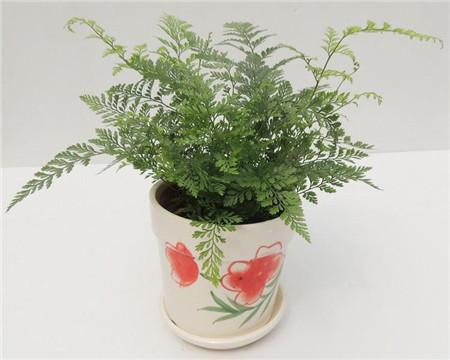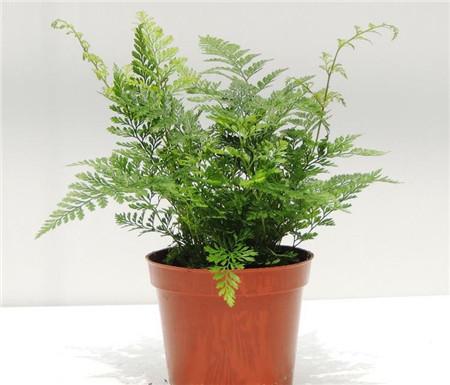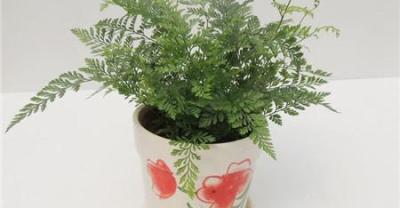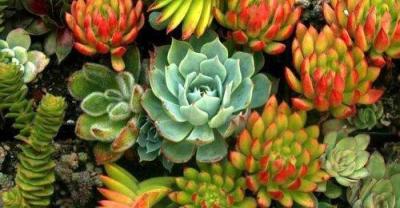Culture method of indoor ornamental fern Dryopteris Dryopteris
Basin soil selection
For breeding wolftail ferns, you can choose flowerpots, high pots or hanging orchids according to the needs of viewing, or you can choose some unique flowerpots, such as special snake pots or a section of rotten wood. The soil is mainly air permeable, which requires good drainage, and rotten leaf soil can be used.
Light and temperature
Wolftail fern likes to grow in a semi-overcast environment, likes bright scattered light and avoids direct sunlight. When raising wolftail ferns at home, you can keep the potted plants or hanging pots in a brightly lit place for maintenance. Dryopteris Dryopteris originates from tropical and subtropical regions. The suitable temperature for growth is between 18 ℃ and 26 ℃. It can not bear high temperature or cold. The growth environment temperature of Dryopteris Dryopteris is too high or too low will lead to poor growth, pay attention to the winter temperature should not be lower than 5 ℃.
Watering and fertilizing
Wolftail fern requires the basin soil to be moist, and it is necessary to maintain an adequate water supply during the growing season, which can be watered every 2 murmurs every 3 days, but be careful not to water too much, which can keep the growing environment of Dryopteris Dryopteris dry. Maintain a certain degree of air humidity, be careful not to be too dry, you can increase air humidity by spraying water. Wolftail fern does not have high requirements for fertilizer and does not like thick fertilizer. In general, when topdressing, you can apply mature thin fertilizer and water, and you can also apply some foliar fertilizer in the process of maintenance.

Matters needing attention in Culture of Dryopteris Dryopteris
Reproduction method
Dryopteris is a fern that has no seeds and usually propagates through spores. However, in general, family farming is propagated through cuttings, which is carried out in spring.
Diseases and insect pests
The main diseases in the growth process of Dryopteris are root rot, and the pests are mainly caused by aphids and red spiders, all of which are caused by environmental factors.

- Prev

Share the successful cases of river crab aquaculture and collect pure dry information quickly.
Boss Li in Jiangsu has two ponds with a total of 52 mu of aquaculture water surface, releasing 1200 seedlings per mu at the beginning of the year. He began to sell crabs one after another seven days before the Mid-Autumn Festival and cleared by mid-November.
- Next

Many people have made mistakes in the breeding methods and matters needing attention of Luohansong.
Aquaculture requires that the soil is rich in humus, loose and fertile, and good drainage. During the growing period, we should pay attention to regular watering. In addition, we should often spray foliar water, which is acceptable.
Related
- On the eggshell is a badge full of pride. British Poultry Egg Market and Consumer observation
- British study: 72% of Britons are willing to buy native eggs raised by insects
- Guidelines for friendly egg production revised the increase of space in chicken sheds can not be forced to change feathers and lay eggs.
- Risk of delay in customs clearance Australia suspends lobster exports to China
- Pig semen-the Vector of virus Transmission (4)
- Pig semen-the Vector of virus Transmission (3)
- Five common causes of difficult control of classical swine fever in clinic and their countermeasures
- Foot-and-mouth disease is the most effective way to prevent it!
- PED is the number one killer of piglets and has to be guarded against in autumn and winter.
- What is "yellow fat pig"? Have you ever heard the pig collector talk about "yellow fat pig"?

